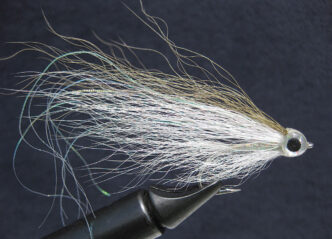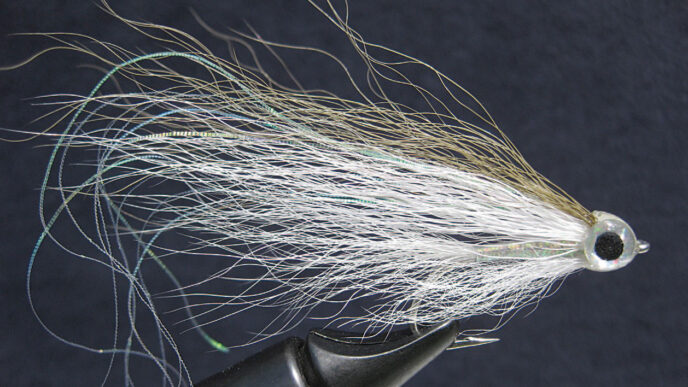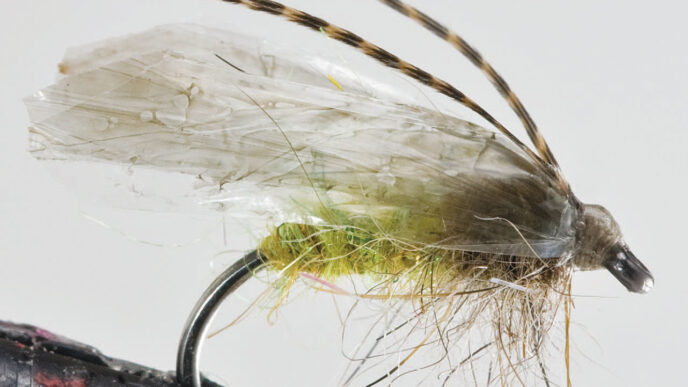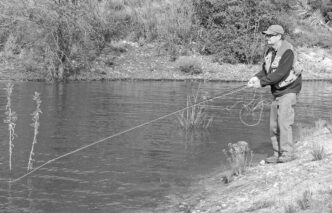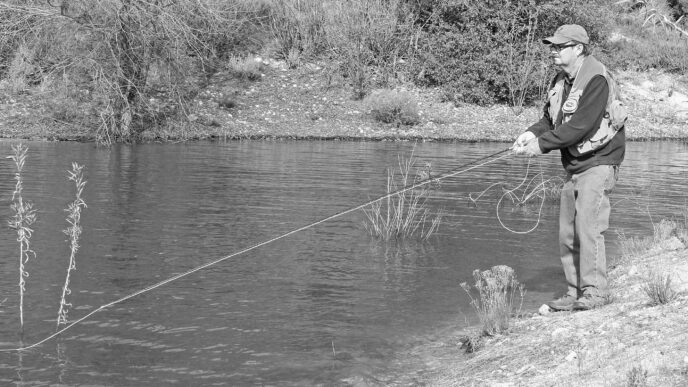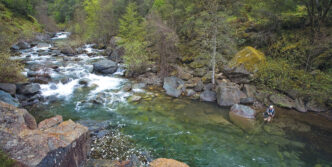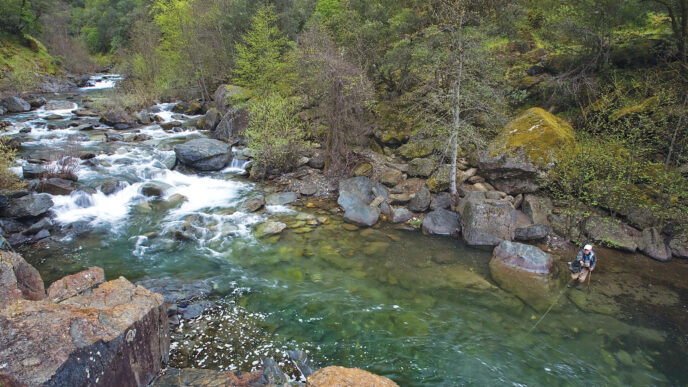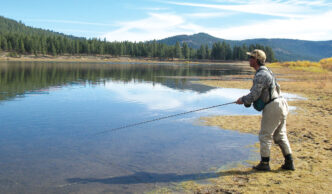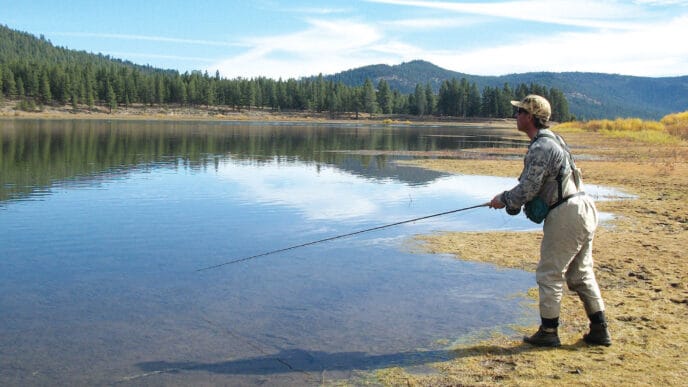At dinner with some old friends a while back, conversation shifted around to gear that had changed significantly for the better since the days when we started fishing. Curiously, while we all believed that rods, reels, and lines have gotten better, we also agreed that we could probably live with what was available in 1980, or even 1960, Spey gear excepted. But when it came to waders, none of us was willing to go back, certainly not to the rubber-coated fabrics of the 1960s or to the gum-rubber Seal-Dri stockingfoot models that lots of us used in the 1970s and 1980s (“I still remember their smell,” one guy offered, causing another to briefly stop chewing) and not to the neoprenes of the late 1980s, either. While providing a bit of a cushion when you banged your legs into rocks and a bit of floatation if you lost your footing, they were heavy and trapped you in your sweat like a dumpling in a steamer.
While the first breathable waders that hit the market in the early 1990s were as frustrating as early graphite rods, and about as trustworthy, a couple of decades of constant improvement in fabrics and coatings have given us waders as close to bulletproof as anything in the fishing world. From light and packable to robust enough for three hundred days a year on the water, there also are more choices than ever.
The same goes for wading boots. The old stuff — from the felt soled roofers’ boots that Andy Puyans sold to Russell’s expensive “brogues,” along with Weinbrenners and Danners and a bunch of others — all seems archaic compared with what’s available today. Built from nonabsorbing synthetic materials, with better drainage, better support, speed lacing of one sort or another, and a variety of outsole options, today’s wading boots represent a notable evolution from what many of us wore even only a decade ago.
New Waders
Though some of the model names remain unchanged, Patagonia has done a pretty thorough revamping of their stockingfoot wader line for 2013. That includes a new single-seam construction technology that eliminates seams on the inside and outside of the legs in favor of a single seam up the back of the leg for greater durability and less abrasion. They employ a new four-layer polyester microfiber fabric with a proprietary breathable/waterproof membrane in three different weights for selective applications on wader tops and bottoms. Patagonia claims their fabric results in breathability that is higher than other “industry leading fabrics.”
At the top of the Patagonia line is now the Rio Gallegos Zip-Front model ($599), which uses the heaviest-weight fabric in the body, with a midweight fabric at the chest and back. The supple, waterproof zipper runs all the way to the crotch, there are two handwarmer pockets, removable knee pads, a waterproof flip-out chest pocket, a docking station for tools, longer gravel guards with a mesh drain at the back, and anatomically designed left and right booties lined in merino wool for warmth. The Patagonia suspension system attaches the suspenders at the waist, rather than at the top seam, which makes for exceptionally easy conversion to waist-highs. These waders won the Best Wading Gear award last August at the International Fly Tackle Dealer show.



Two other Patagonia waders with the new fabric and seam construction are also available. The redesigned zipperless Rio Gallegos model ($499) is built with the new lightweight fabric in the chest and heavyweight fabric in the legs, and it has handwarmer pockets and the same wool-lined booties as the zippered model. The Skeena River model ($399) uses the new midweight fabric in the legs and the lightweight fabric in the chest, has a zip-front chest pocket with a docking station on top of a reach-through kangaroo handwarmer pocket, and uses standard high-density neoprene left and right booties. All three new waders are available in multiple sizes. Apparently unwilling to rest on its own laurels, Simms also added to its extensive line with the new G4Z ($799.95) and G4Pro ($699.95) waders. Both are made using a new five-layer Pro Shell Gore-Tex fabric in the seat, legs, and waist. This fabric, according to Simms, is 25 percent more breathable as well as more durable than the four-layer fabric in previous top-end Simms waders. As the “Z” suggests, the G4Z is a zippered version, while the G4Pro is zipperless. Both models feature just about every possible bell and whistle, from fly patches, to retractor docking stations, to zippered pockets, to integral gravel guards, to stretch mesh suspenders. They also convert easily to waisthighs. Simms waders also are available in custom sizes, albeit at even higher prices, and Simms is the only company I know of that offers that option.
Orvis’s new Silver Sonic Convertible breathable stocking foot waders ($259) build on the company’s patented method for sealing seams with ultrasound, rather than by sewing. They’re made from two different four-layer fabrics — lighter on top, heavier in the seat and legs. Silver Sonic Convertibles share some features with Patagonia’s waders, with lower-leg seams running up the back of the legs for reduced abrasion and suspenders that attach inside, at the waist, so you can roll the tops down and turn them into waist-highs without removing the suspenders. Silver Sonics have ergonometric booties, a water-resistant front zippered pocket, a flip-out interior waterproof pocket for a camera and cell phone, plus integral gravel guards with a quick-drain panel in the back. Convertibles are available in an expanded size range in both men’s and women’s models. There’s also a zippered version of the Convertible ($395) with a full-length waterproof front zipper, two chest pockets, and two zippered handwarmer pockets.
Redington has two interesting new stockingfoot waders for 2013. The SubZero ($299.95) uses heavy-duty three-millimeter neoprene throughout the lower portion and four-layer breathable fabric above. The neoprene has what Redington calls a “burly face” for durability and abrasion resistance. The booties are five-millimeter neoprene with integral gravel guards, there’s a fleece-lined handwarmer pocket with a neat flap closure to keep in warmth and an outside zippered pocket on top of that for more storage, plus a flip-out tool pocket with yet another mesh pocket, a forceps dock, and a Hypalon retractor dock. It’s a neat idea: insulation where you need it, with lightweight and minimal bulk on top, and it should be a winner with folks who move around a lot when fishing in cold temperatures. Still, if you’re going to be relatively sedentary, as in some coastal steelheading or duck hunting, what really keeps you warm in cold water is getting rid of wading boots that cut off ankle circulation in favor of insulated boot foot waders and good fleece long johns.
At the other end of the wader spectrum are Redington’s new Sonic-Pro Ultra Packable Waders ($289.95.) These are lightweight, small-volume waders intended for anglers who backpack or travelers who want a pair of waders that pack down small and have minimal weight. The seams are welded with ultrasound (Redington licenses this technology from Orvis, as I understand it) and then double-taped. The waders stuff into their own front pocket, and the wading belt doubles as a carry strap. A removable tool pouch adds storage if you want it. Low-profile neoprene booties with gravel guards help keep down weight and bulk.
L. L. Bean has come up with a new four-layer stockingfoot Kennebec Wader ($199–$219) with all the features you’d expect on more expensive waders, plus a unique built-in wader belt that fastens with hook-and-loop closures, rather than bulkier traditional plastic buckles. And for a couple of hundred bucks more, there’s an Aquastealth bootfoot version of the Kennebec wader ($399–$419) with a unique version of a wire closure system for the built-in boots. You tighten the boots by twisting a knob at the top of the tongue that not only cinches up the instep, but also pulls the tongue panel and another panel at the back of the boot toward each other. With the system loosened, the boots are very easy to step into. It’s an interesting approach, but without studs on the soles, these boots are still going to be less than ideal on many Western streams.
And Now That We’re on the Subject of Boots
The new KGB guide boot from Korkers ($209.99 to $229.99, depending on the soles) is a sleek, high-on-the-ankle boot of 100 percent hydrophobic and waterproof materials. The outside is a high grade rubber, which sounds odd, but it is both durable and unfriendly to invasives. The tall upper cuff supports ankles in any terrain and is lined with a low-friction material to make getting into and out of the boots easy. Heavy-duty laces run through metal rings across the instep, with a locking lace system from ankle to top that lets you isolate the instep and ankle zones to customize fit. There are drain ports low in the boot, and a molded heel cap makes it easy to get the boots off. For soles, the KGB uses the most recent Korkers OmniTrax interchangeable sole system: 10 different soles, ranging from felt, to studded felt, to two kinds of sticky rubber. The basic boot package includes two types of interchangeable soles. Choose between the new Vibram IdroGrip (a superior sticky rubber) and felt, or IdroGrip and studded IdroGrip. Six other interchangeable sole options can be purchased separately ($29.99 to $59.99.) One of those options is the new Alumatrax, with five malleable aluminum bars running across the foot. Like the long-gone Super Stream Kleats and Patagonia’s recent aluminum-bar offerings, Alumatrax should stick to slick rocks like grim death.
Patagonia’s new Ultralight Wading boots ($179) are the lightest boots the company has ever produced and thus perfect for travelers worried not just about lugging gear around, but about making airline weight limits with a duffel full of gear. They have a synthetic leather upper, a compression-molded EVA midsole, and a polypropylene insole/shank that provides surprising rigidity and support, plus a mesh foot bed for drainage, and they are built on a wide last for neoprene stockingfoot booties. The sole is either felt or Patagonia’s Rock Grip, one of the better, if not the best, of the sticky rubbers.
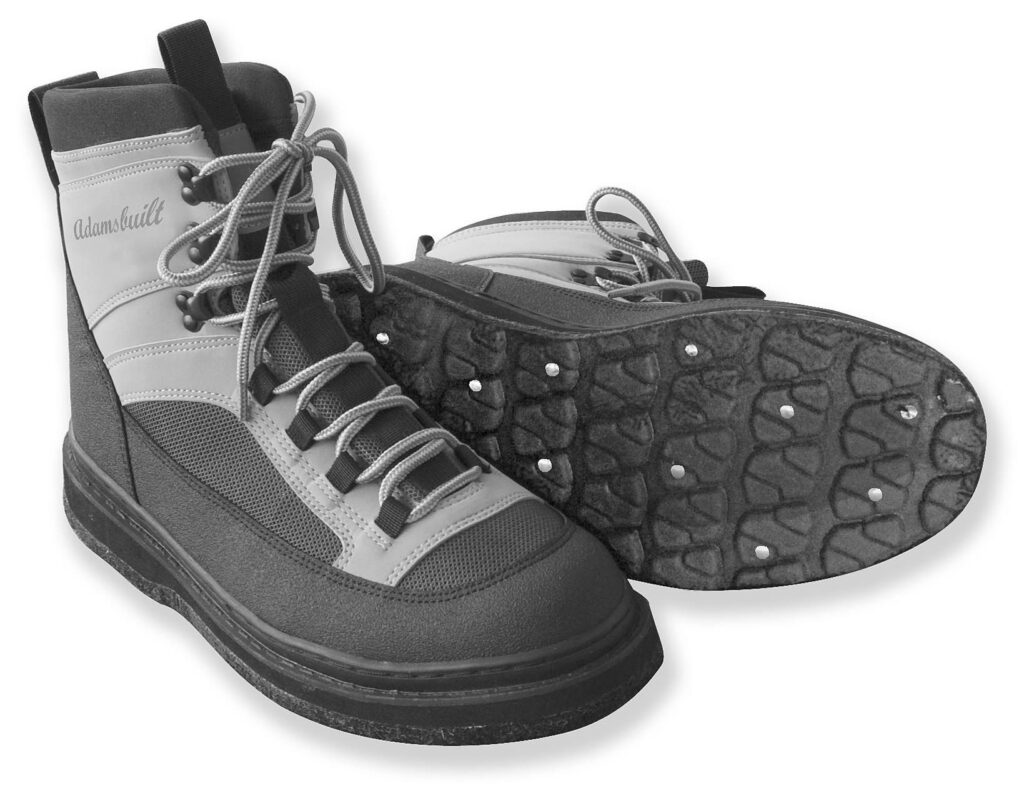
Patagonia’s other new lightweights are their Neoprene Flats Booties ($89). The company’s heavier Marlwalker booties offer better ankle support and side-of-foot protection if you’re wading sharp-edged bottoms, but are as bulky as standard wading boots. The new Neoprene Flats Booties are light in weight, come well above the ankle, have durable facings on the heels, toes, and sides, a zipper that lets you get in and out of them quickly, and, most important, an impenetrable sole that lets you wade with confidence in all but the worst conditions.
Adamsbuilt has a couple of competitively priced new boots that differ only in name and type of sole. Both have synthetic leather and polyester mesh uppers, speed lacing, reinforced rubberized heels and toe boxes, and padded insoles. The Gunnison River ($129.95) has studded sticky-rubber soles, while the Smith River is a felt-soled boot ($109.95).
Chota’s new Lost Creek “felt alternative” boots ($174.95) have totally synthetic uppers and a rubber rand that wraps around the upper portion of the boot for extra durability. The soles are the company’s new dual-density sticky rubber and accept Chota’s optional steel or carbide cleats for additional traction. The insides of the Lost Creek boots feature nonporous materials that don’t absorb water, and there’s additional material in the tongue gusset to allow the boots to be opened really wide for ease of entry.
Chota has also upgraded their leather upper Caney Fork boots ($164.95) with the new sticky-rubber soles, upgraded their STL (felt with bases tapped for included cleats at $159.95) and STL Plus boots (felt alone at $144.95) by adding a large rubber heel cap to increase durability and make it easier to kick them off, as well as a finger loop on the rear of the boots.
Other Good Stuff
On the soft-goods front, Temple Fork Outfitters has introduced a luggage line that, apart from a color change, looks identical to the exceptionally good, reasonably priced line that G. Loomis discontinued a few years ago. (From what I understand, the stuff was just too bulky for G. Loomis to warehouse conveniently.) In any event, TFO’s reintroduction of the line is good news for those of us who didn’t grab one of the earlier, very well-designed rolling duffels. The Large Rolling Fly Fish Cargo Bag ($199) is 36 by 16 by 16 inches (9,216 cubic inches), zips open from the top to hold a huge amount of clothing and gear, and has three internal PVC rod tubes accessible from the lift-handle end of the bag that will store up to five rods. The smaller Split Bottom Rolling Cargo Bag ($169) is a clamshell affair at 36 by 13 by 15 inches (7,020 cubic inches) with a zip access hard bottom and lower perimeter in which you can safely carry rods in their own aluminum cases and a soft top with one large center compartment and two smaller end compartments. Both bags are built from materials that resist mildew and rot, have ball-bearing inline-skate wheels, dual support rails on the bottom, retractable handles, and oversize, lockable zippers. I’ve used the G. Loomis version of the split bottom bag for four years now with no storage or durability problems on many long trips of a week or more. The larger version with the built-in rod tubes will probably carry enough gear for a month, assuming personal hygiene isn’t a high priority. A couple of cautions: most airline regulations limit checked bags to 62 inches, length plus width plus height, and both bags exceed that. I’ve never seen anybody called or charged extra for checking much larger duffels, but I tend to winch down the compression straps to get under the limit anyway. And of course, the hard bottoms and handle hardware put both bags at the plus-or-minus-10-pound mark, unloaded, which subtracts from what you can carry to make a 20-kilogram (44-pound) weight limit. But ya gotta love those wheels when getting a whole lot of gear from place to place.
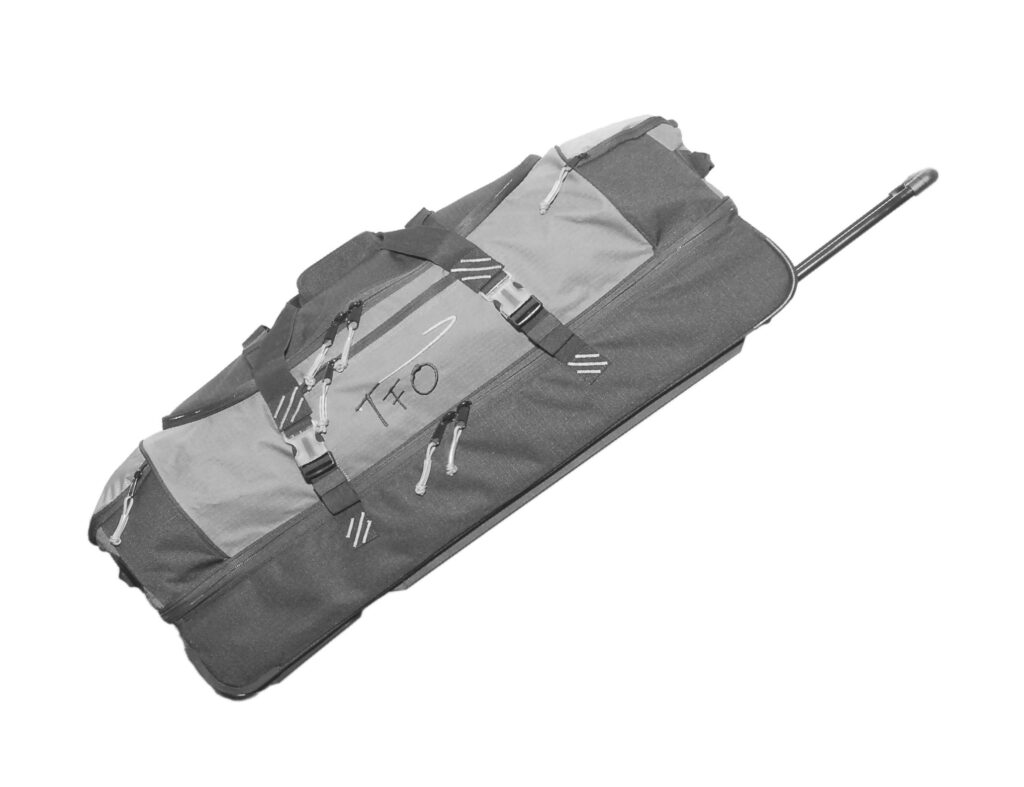
On the outerwear front, Patagonia has a new fishing jacket that combines two of their most popular outdoor garments. The 3-in-1 River Salt Jacket combines the shell of their sleek River Salt fishing jacket with a snap-out PrimaLoft liner much like the company’s Nano Puff jacket. Wear them together when it’s cold or as separates. The shell has a number of water-resistant pockets for fly boxes and other necessities, and they don’t protrude from the outside of the jacket, so the appearance is trim. The jacket is also a couple of inches longer than usual, so it works well sitting down in a boat. The PrimaLoft insulation in the snap-front liner is exceptionally lightweight, warm when wet, and highly packable. At $549, it’s pricey, but hey, it’s just money.
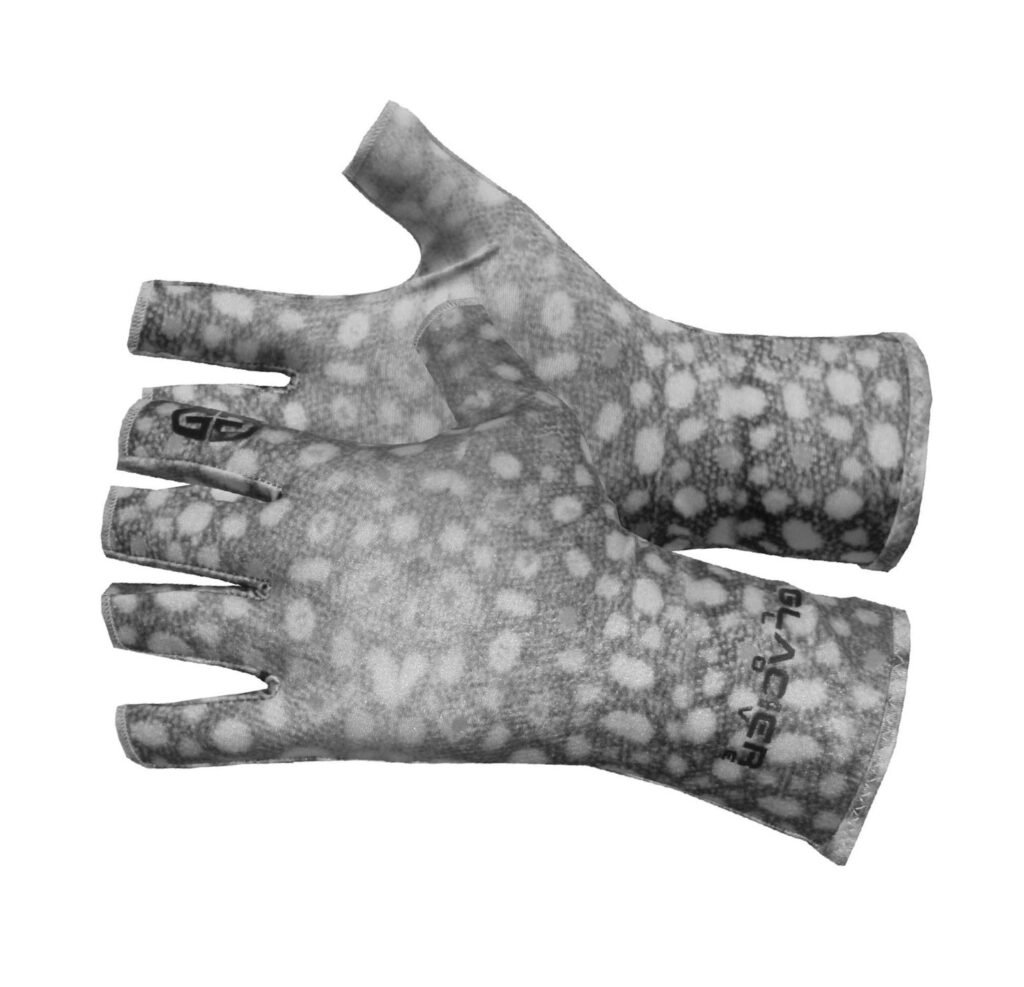
Finally, for those of you who love fishskin-colored anodized reels, fish-skin-colored anodized fly boxes, or just plain fish skin, Glacier Glove has introduced a version of their Abaco Bay Sun Gloves in rainbow and brook trout skin patterns ($27.99). The designs reproduce images from Val Atkinson’s high-definition photography, and I have to say they definitely look fishy . . . whatever you want to understand by that.
Enough! Now get out there and use the gear you have.






